Botswana self-drive safari - a wild adventure!
Exactly one month ago to the hour, as I write this, we were sat in Johannesburg Airport waiting for our transfer flight to Kasane, Botswana. Although it seems like a lifetime ago as I sit here now with the central heating on, looking out at 50mph winds and rain hammering against the window.We had our itinerary planned out and an idea of what we were going to see but other than that we didn't know what was ahead of us or what animal encounters we would have. That, for me, is the excitement of a safari trip - it's unpredictable, always packed with surprises and an element of luck & a little danger thrown in!The four of us, Mark, Steve, Andy & myself, are all members of the Sheringham RNLI Lifeboat Crew, and in the middle of 2019 had decided to book this trip through Tawana Self-Drive, a safari company based in Botswana. Mark had previously used Tawana in 2019 for a trip to the same area so we had the advantage of Mark's experience and we knew that the company provided an excellent service. Vincent at Tawana had planned us a detailed itinerary, maps for the daily drives and organised our campsite bookings + park entrance fees, all we had to do was turn up and not get eaten!I was excited to have the chance to document the trip through video (with some photos thrown in) and produced this 25 minute film of our adventures...Visiting in the 'rainy season' aka Green Season meant that the trees were in leaf with lush grasslands and plenty of water & food around for the animals. As a result it is breeding season for many of the species which meant lots of baby animals & colourful plumage on the birds. We saw very little rain apart from a couple of nights when it poured but other than that we had mostly sunny days and temperatures around the mid thirties. Many people tend to avoid safari in Botswana at this time of year, possibly because it's not in the school holidays but also as they believe that rainy season means rain every day. I have also read that people mainly go in the dry season as it means the animals tend to congregate around the waterholes so are easier to spot but with this many animals around I don't think that's an issue. Besides I would much rather see the animals when they are happy & well-fed and with the lush greenery as a backdrop rather than lots of dead, brown grass!As you can see in the shot below our trucks were certainly built for the job, 4x4 Toyota Land Cruisers with two roof-top tents on each vehicle. The rear storage spaces contained a fridge, cool box, tables, chairs, cooking utensils, gas stove, spade, axe and much more. We were fully self-contained, just add food, water, fuel and plenty of beer & wine (plus Amarula - the South Africa cream liqueur as a nightcap)!With plenty of USB charging ports inside the vehicles (we brought some extras) and two powered sockets in the rear (South Africa plug type) it was no problem to keep all of my cameras, torches & laptop charged. We also brought two walkie talkies which proved invaluable for chatting between the trucks when we spotted something interesting.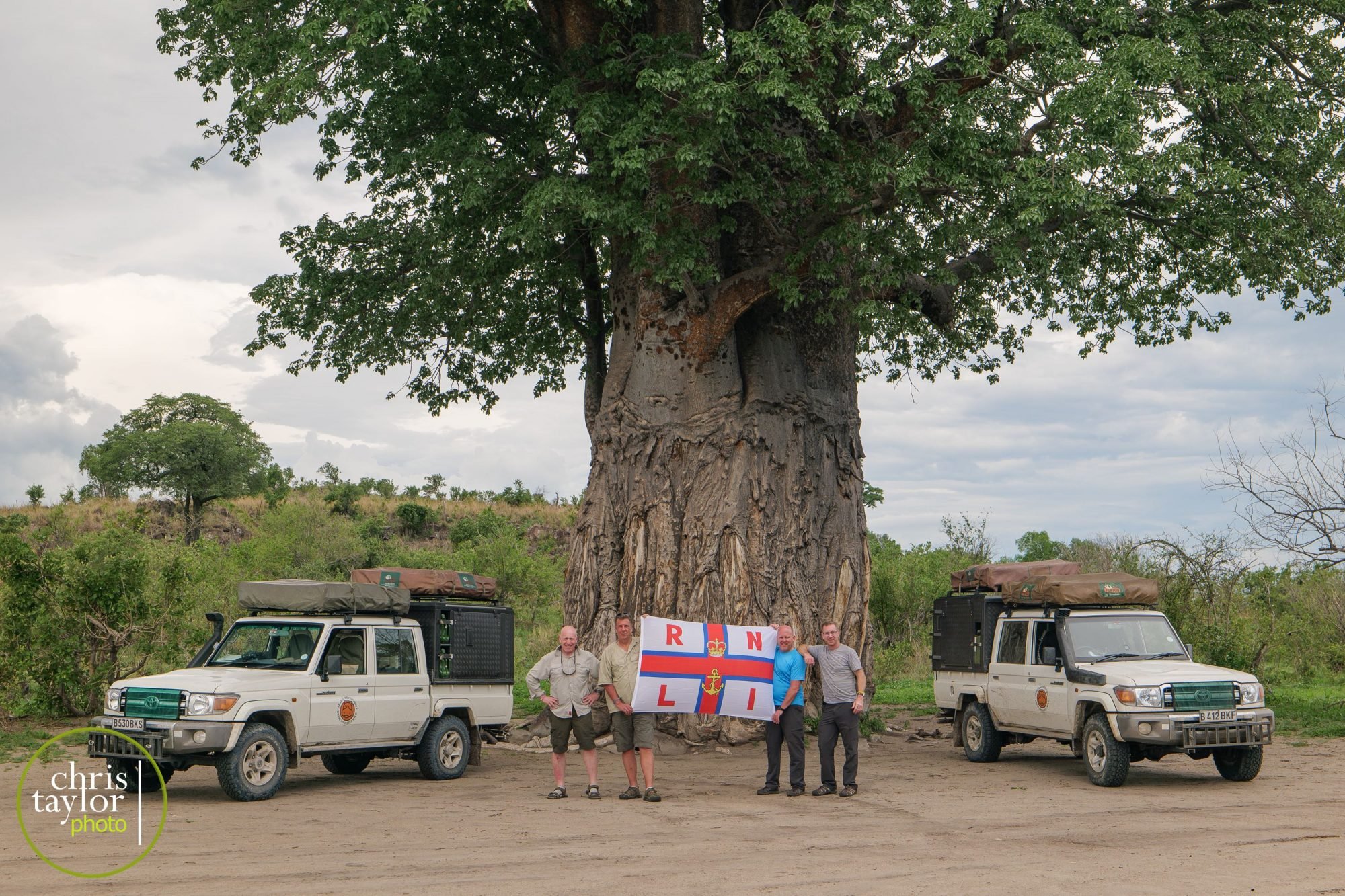 I was struck by the beauty and variation of the habitats in Botswana, (dense scrub, open grassland, rocky outcrops, ancient mopani forest, huge marshes, and of course the Okavango Delta) add to that the thriving populations of animals & birdlife and you have the recipe for a hugely memorable safari trip.We started off in the Chobe National Park and camped for the first couple of nights right by the Chobe river at Ihaha, the first of many of our truly wild campsites, we were visited by a family of mongoose, heard lions calling each night as we fell asleep and had giraffe feeding in the bushes right behind us one evening. Absolute magic!
I was struck by the beauty and variation of the habitats in Botswana, (dense scrub, open grassland, rocky outcrops, ancient mopani forest, huge marshes, and of course the Okavango Delta) add to that the thriving populations of animals & birdlife and you have the recipe for a hugely memorable safari trip.We started off in the Chobe National Park and camped for the first couple of nights right by the Chobe river at Ihaha, the first of many of our truly wild campsites, we were visited by a family of mongoose, heard lions calling each night as we fell asleep and had giraffe feeding in the bushes right behind us one evening. Absolute magic! Chobe National Park is famed for having the largest surviving elephant population in the world, currently thought to be at around 120,000, always a huge pleasure to watch as they feed, drink, bathe & interact with each other. Sometimes interacting with us - mostly very placid & calm, occasionally they decide they want to remind us who is boss so will pull a mock charge (as the baby in the film shows) or just hold their ground, flapping their ears and shaking a nearby bush to demonstrate their power. So long as we showed respect, gave them time to move on (or on the odd occasion slowly backed away) they would carry on their feeding and allow us to pass without incident.The hippos on the other hand are a different kettle of fish as we learned one morning at Moremi when we found one still feeding on the grass just outside our campsite. As our lead truck (Mark & Steve) pulled alongside, the hippo decided he didn't want us around so charged them at full speed, jaws wide open. Luckily Mark accelerated off just in time to see the huge beast sprinting after him in the wing mirror. We sat about 20m behind watching in awe, I'll never forget the sight of the hippo's large behind wobbling with fury as it ran after them, eventually giving up when he realised he wasn't going to catch them. Sadly it all happened so fast I didn't manage to turn a camera on to film it, I couldn't take my eyes off what was happening, it was a good shot of adrenaline to start the day (especially for Mark & Steve!)
Chobe National Park is famed for having the largest surviving elephant population in the world, currently thought to be at around 120,000, always a huge pleasure to watch as they feed, drink, bathe & interact with each other. Sometimes interacting with us - mostly very placid & calm, occasionally they decide they want to remind us who is boss so will pull a mock charge (as the baby in the film shows) or just hold their ground, flapping their ears and shaking a nearby bush to demonstrate their power. So long as we showed respect, gave them time to move on (or on the odd occasion slowly backed away) they would carry on their feeding and allow us to pass without incident.The hippos on the other hand are a different kettle of fish as we learned one morning at Moremi when we found one still feeding on the grass just outside our campsite. As our lead truck (Mark & Steve) pulled alongside, the hippo decided he didn't want us around so charged them at full speed, jaws wide open. Luckily Mark accelerated off just in time to see the huge beast sprinting after him in the wing mirror. We sat about 20m behind watching in awe, I'll never forget the sight of the hippo's large behind wobbling with fury as it ran after them, eventually giving up when he realised he wasn't going to catch them. Sadly it all happened so fast I didn't manage to turn a camera on to film it, I couldn't take my eyes off what was happening, it was a good shot of adrenaline to start the day (especially for Mark & Steve!)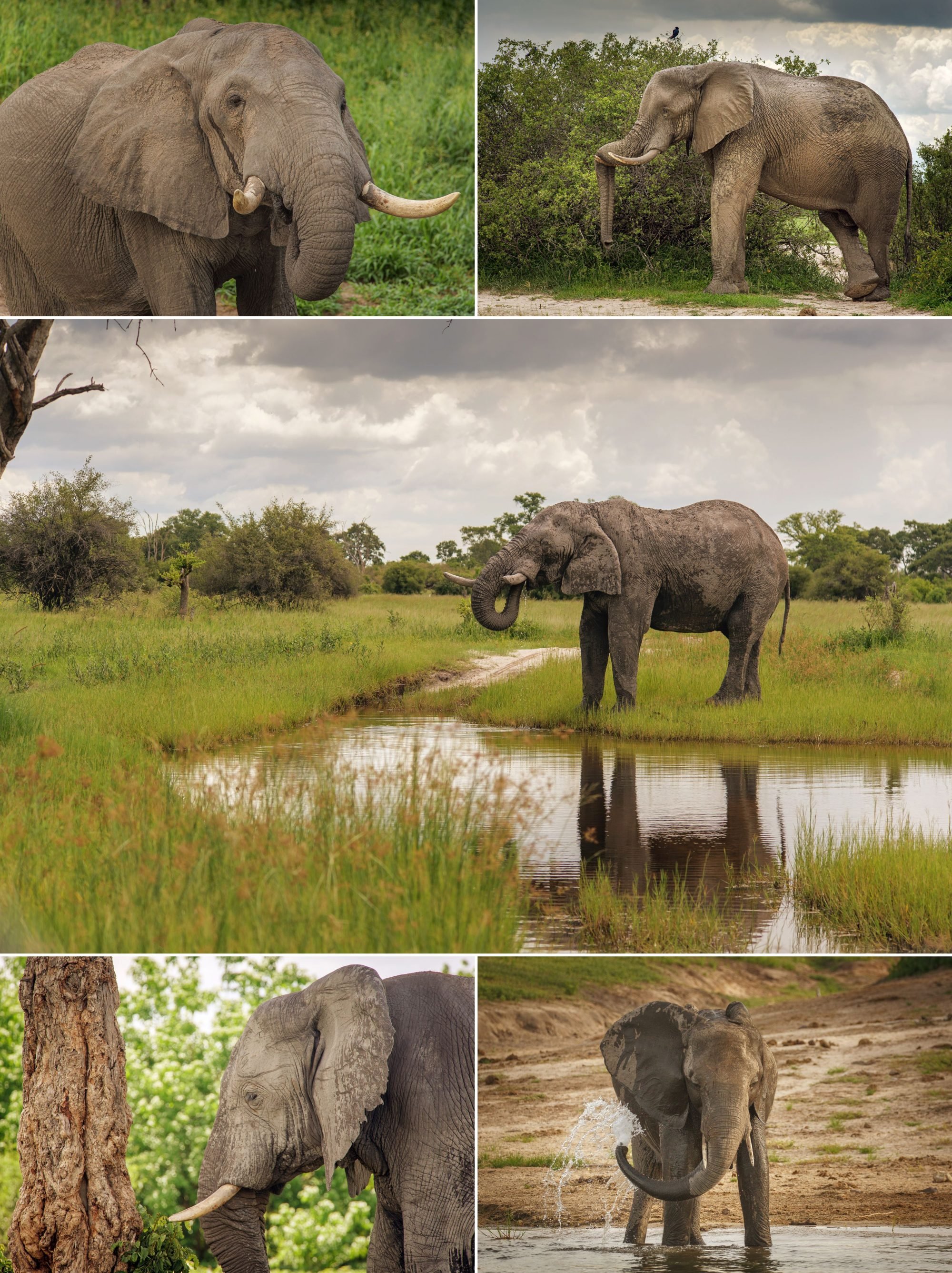
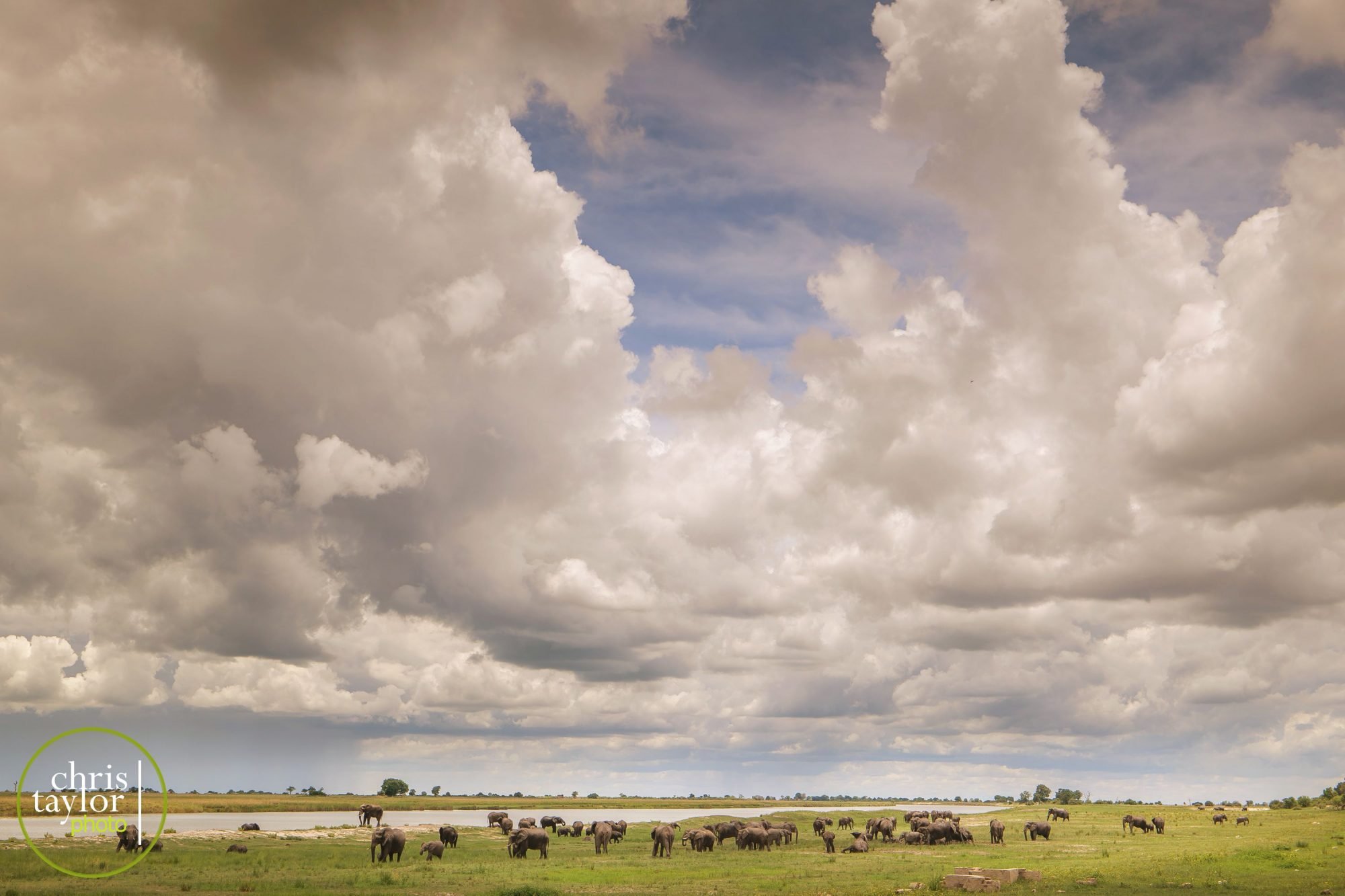 Each day was punctuated with the taking down & putting up of the tents, while we did get fairly efficient at it after a few days, it was a sweaty, dusty job so we always saved the showers for after the tents have been put up or down.Once we had all the tents up each evening the next job was to get the fire lit, with the mopani wood we bought at the roadside stalls, then we got the chairs & tables up, cracked open a cold beer & got to work on dinner. Our evening meals ranged from steak cooked over the braai (most nights!) to chicken, Kielbasa sausages (known as 'Russians' in South Africa) and a hotpot one night. The key was to keep it fairly simple and provide something filling since this was generally the only meal we had on many days.As you'll notice below we are all sitting with our backs to the vehicles - since none of the campsites have fences, the animals (including the large predators), can wander into camp at any time if they wish so it pays to be vigilant, we would make a pretty easy meal for a lion, being devoid of any claws, antlers or decent teeth to bite back with!We stayed at some amazing places during our trip, our favourite campsites were Ihaha in Chobe, Mbudi at Khwai and Xanakaxa in Moremi, with Tshaa campsite at Mababe having real potential but being deserted & overgrown (although that may have been due to us being there in the off-season, it wouldn't take too much work to get the site back up to scratch, being in such a stunning location it could easily have been our favourite site if operational at the time of our visit).
Each day was punctuated with the taking down & putting up of the tents, while we did get fairly efficient at it after a few days, it was a sweaty, dusty job so we always saved the showers for after the tents have been put up or down.Once we had all the tents up each evening the next job was to get the fire lit, with the mopani wood we bought at the roadside stalls, then we got the chairs & tables up, cracked open a cold beer & got to work on dinner. Our evening meals ranged from steak cooked over the braai (most nights!) to chicken, Kielbasa sausages (known as 'Russians' in South Africa) and a hotpot one night. The key was to keep it fairly simple and provide something filling since this was generally the only meal we had on many days.As you'll notice below we are all sitting with our backs to the vehicles - since none of the campsites have fences, the animals (including the large predators), can wander into camp at any time if they wish so it pays to be vigilant, we would make a pretty easy meal for a lion, being devoid of any claws, antlers or decent teeth to bite back with!We stayed at some amazing places during our trip, our favourite campsites were Ihaha in Chobe, Mbudi at Khwai and Xanakaxa in Moremi, with Tshaa campsite at Mababe having real potential but being deserted & overgrown (although that may have been due to us being there in the off-season, it wouldn't take too much work to get the site back up to scratch, being in such a stunning location it could easily have been our favourite site if operational at the time of our visit).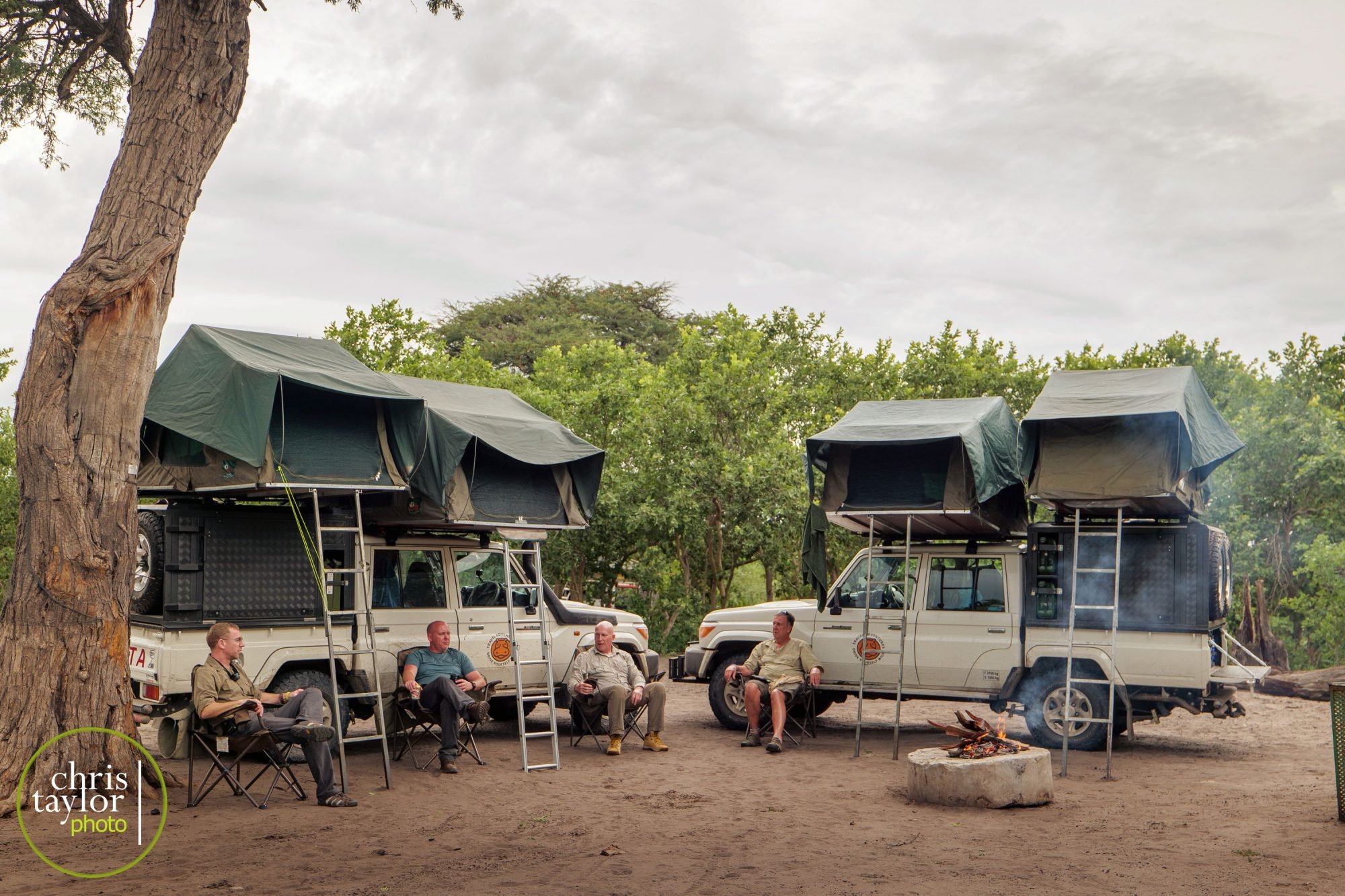
 We all found the dung beetles fascinating, busily rolling their balls of elephant dung around, not sure where they were taking them but they didn't hang about. Often they would choose to roll them down the smooth ruts of the sand roads which required a sharp eye and quick steering to avoid squashing the poor animals in their prime!
We all found the dung beetles fascinating, busily rolling their balls of elephant dung around, not sure where they were taking them but they didn't hang about. Often they would choose to roll them down the smooth ruts of the sand roads which required a sharp eye and quick steering to avoid squashing the poor animals in their prime!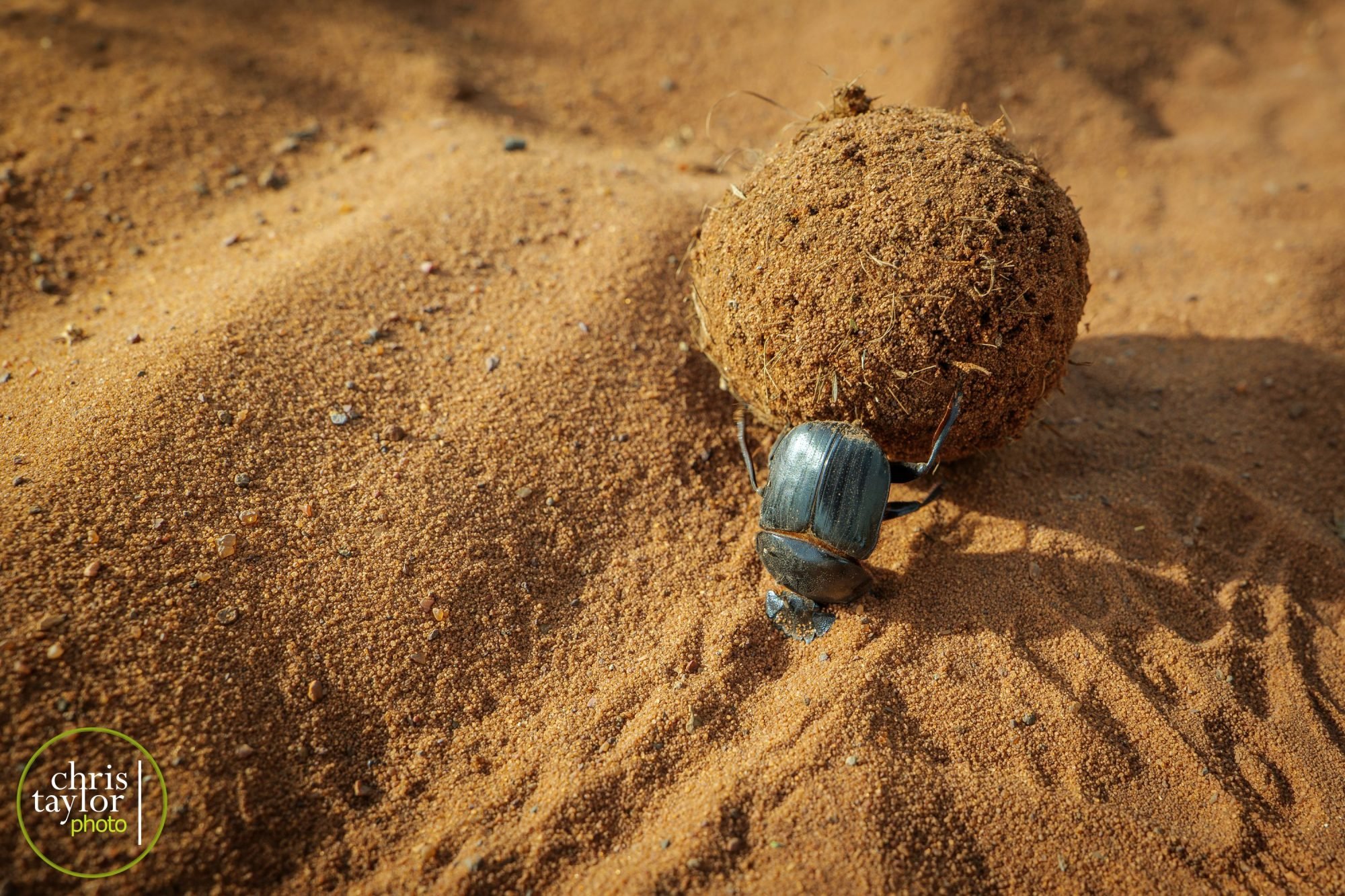 Water buck (below) are my favourite antelope, their beautiful shaggy coats & faces remind me of a Jim Henson creation. We saw so many different species on our trip - lion, wild/painted dog, black-backed jackal, spotted/laughing hyena, banded mongoose, slender mongoose, dwarf mongoose, genet, baboon, vervet monkey, tree squirrel, honey badger, giraffe, zebra, elephant, hippo, warthog, buffalo, wildebeest, tsessebe, dik dik, impala, water buck, lechwe, kudu, sitatunga, bush buck, crocodile, leopard tortoise and a huge array of birds. Sadly no leopard (although we must have scanned hundreds of trees looking for that telltale silhouette or the hanging tail) and not a single snake, while it would have been nice to see one we were all quite glad not to have bumped into a black mamba!
Water buck (below) are my favourite antelope, their beautiful shaggy coats & faces remind me of a Jim Henson creation. We saw so many different species on our trip - lion, wild/painted dog, black-backed jackal, spotted/laughing hyena, banded mongoose, slender mongoose, dwarf mongoose, genet, baboon, vervet monkey, tree squirrel, honey badger, giraffe, zebra, elephant, hippo, warthog, buffalo, wildebeest, tsessebe, dik dik, impala, water buck, lechwe, kudu, sitatunga, bush buck, crocodile, leopard tortoise and a huge array of birds. Sadly no leopard (although we must have scanned hundreds of trees looking for that telltale silhouette or the hanging tail) and not a single snake, while it would have been nice to see one we were all quite glad not to have bumped into a black mamba!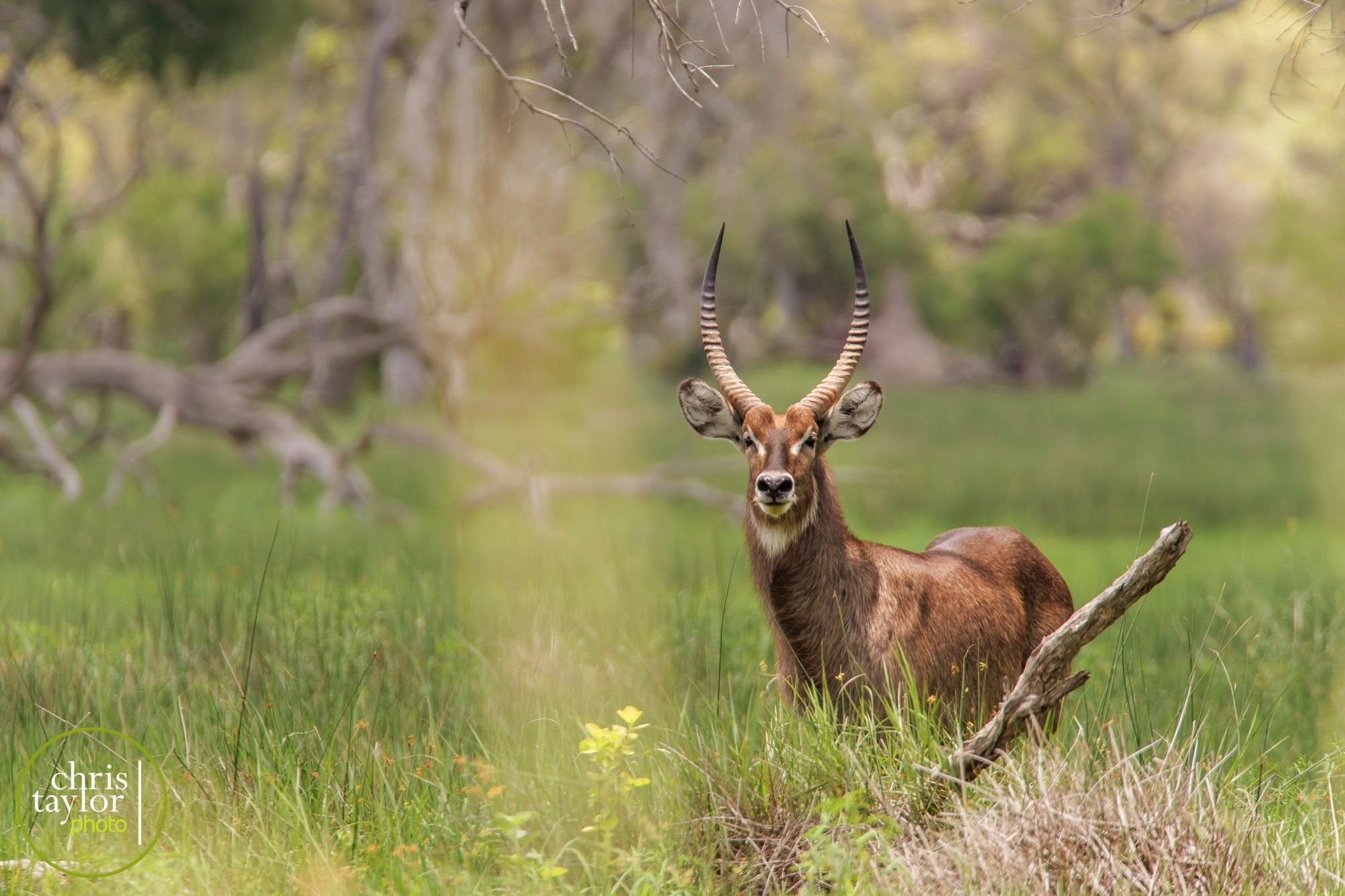
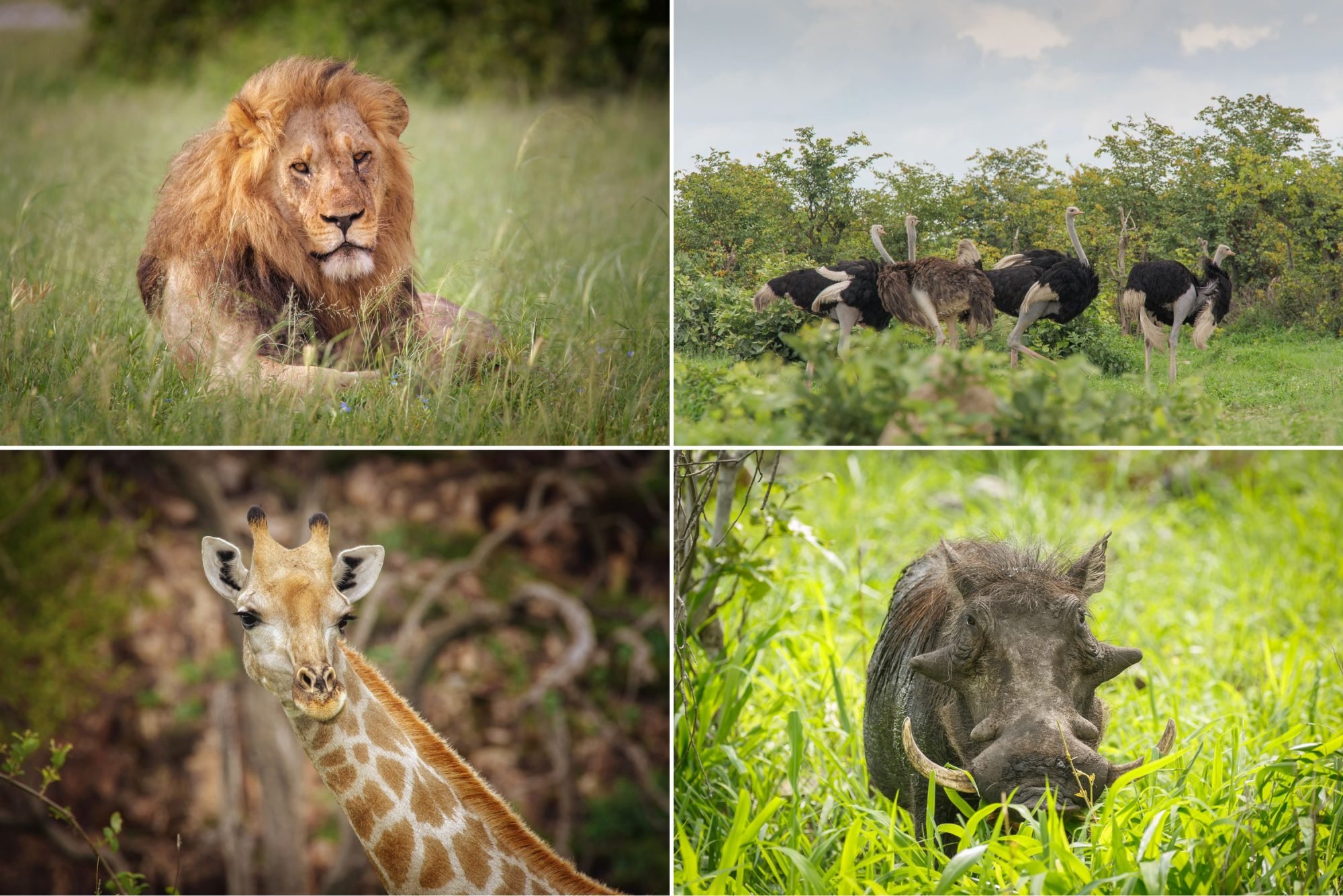

 This yellow-billed hornbill was great fun to photograph, very tame and with those great colours & eyelashes I had to get a close-up portrait...
This yellow-billed hornbill was great fun to photograph, very tame and with those great colours & eyelashes I had to get a close-up portrait... While staying at the brilliantly named Xakanaxa (promounced 'kakanaka') we took a boat trip on the Okavango, a huge inland delta which eventually feeds in to the Chobe & Zambezi rivers and feeds the Victoria Falls. We had two lucky sightings of the rare Sitatunga antelope, a marsh-dweller specialised for their aquatic lifestyle and no stranger to swimming through the water with just the tip of their snout showing...
While staying at the brilliantly named Xakanaxa (promounced 'kakanaka') we took a boat trip on the Okavango, a huge inland delta which eventually feeds in to the Chobe & Zambezi rivers and feeds the Victoria Falls. We had two lucky sightings of the rare Sitatunga antelope, a marsh-dweller specialised for their aquatic lifestyle and no stranger to swimming through the water with just the tip of their snout showing... When driving the sand roads we were always checking for animal footprints, Mark was great at spotting and tracking the prints, following a set of lion print one morning, taking us right to a pride of lion with eight cubs. Below is a hyena print, discernible from lion print by the size, shape and fact that the claws are showing in the impression. Cats generally have their claws retracted when walking apart from the cheetah - the only cat with non-retractable claws.
When driving the sand roads we were always checking for animal footprints, Mark was great at spotting and tracking the prints, following a set of lion print one morning, taking us right to a pride of lion with eight cubs. Below is a hyena print, discernible from lion print by the size, shape and fact that the claws are showing in the impression. Cats generally have their claws retracted when walking apart from the cheetah - the only cat with non-retractable claws.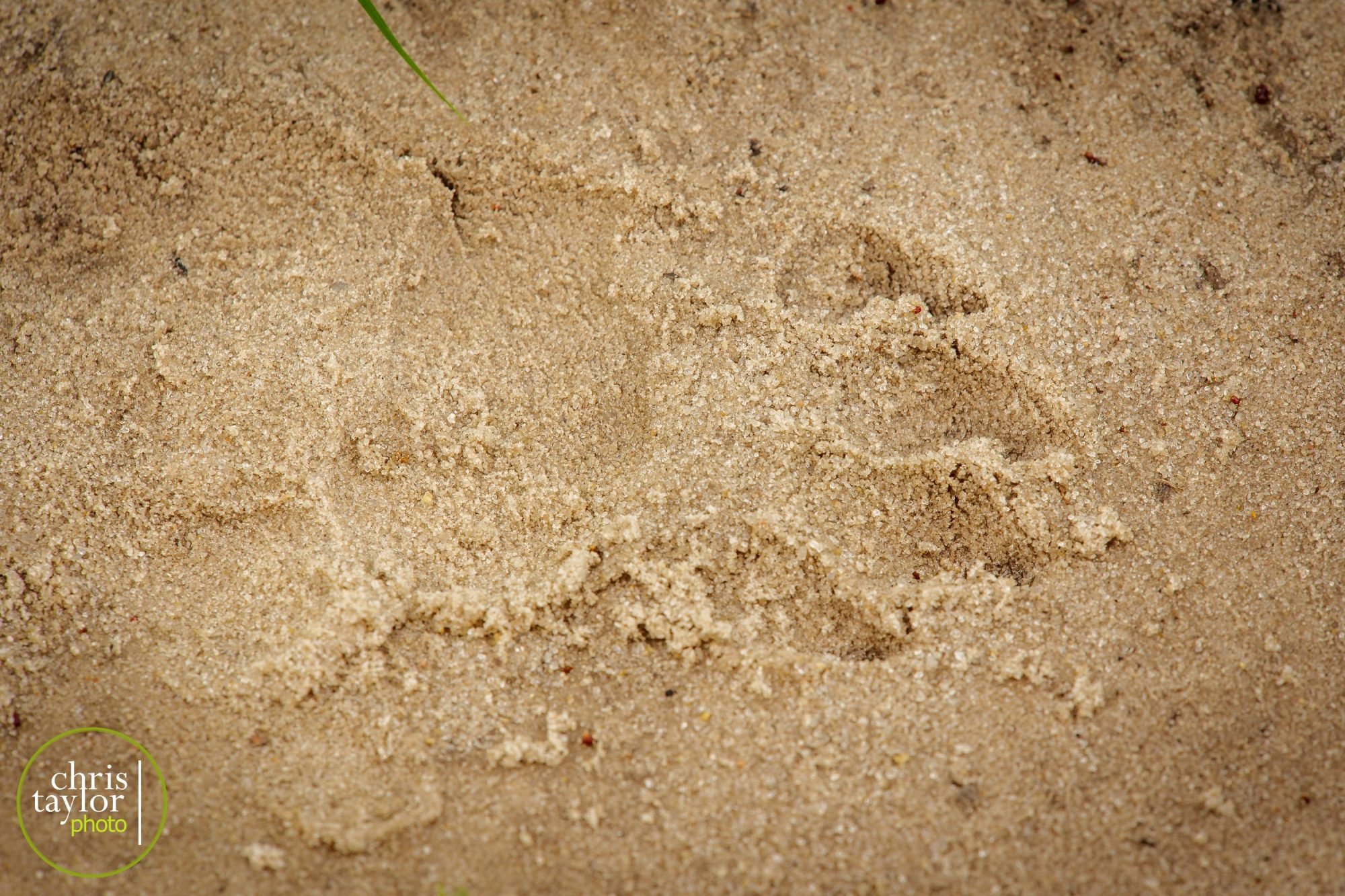 We found this young adult male lion in some bushes right by the road while driving between third & fourth bridge at Moremi. He was panting & still very out of breath from just killing a red lechwe antelope. We sat with him for around 15 minutes, he seemed on-edge, obviously wary of having his kill stolen by another lion or hyena. It was intense sitting just 6ft from him with our windows wide open knowing that he could easily get to us with just one jump if he decided he didn't want us around any more. Amazing to be able to make out the reflection of me sitting at the window of the truck in his pupils!
We found this young adult male lion in some bushes right by the road while driving between third & fourth bridge at Moremi. He was panting & still very out of breath from just killing a red lechwe antelope. We sat with him for around 15 minutes, he seemed on-edge, obviously wary of having his kill stolen by another lion or hyena. It was intense sitting just 6ft from him with our windows wide open knowing that he could easily get to us with just one jump if he decided he didn't want us around any more. Amazing to be able to make out the reflection of me sitting at the window of the truck in his pupils! The birdlife at all of the parks we visited were incredible, below is a hoopoe, yellow-billed storks, red-billed hornbill and fish eagle. We also saw great white pelican, great egret, grey heron, goliath heron, ostrich, saddle-billed stork, marabou stork, hamerkop, spoonbill, sacred ibis, spur-winged goose, knob-billed duck, jacana, blacksmith plover, crowned lapwing, spotted thick-knee, southern black korhaan, kori bustard, swainson's spurfowl, guineafowl, cape vulture, black kite, hawk eagle, marshall eagle, steppe buzzard, black shouldered kite, osprey, grey go-away bird, little bee-eater, carmine bee-eater, lilac-breasted roller, pied kingfisher, woodland kingfisher, malachite kingfisher, southern ground hornbill, yellow billed-hornbill, common fiscal, red-billed oxpecker, quelea, sunbird, weaver bird and many more that we couldn't easily identify!
The birdlife at all of the parks we visited were incredible, below is a hoopoe, yellow-billed storks, red-billed hornbill and fish eagle. We also saw great white pelican, great egret, grey heron, goliath heron, ostrich, saddle-billed stork, marabou stork, hamerkop, spoonbill, sacred ibis, spur-winged goose, knob-billed duck, jacana, blacksmith plover, crowned lapwing, spotted thick-knee, southern black korhaan, kori bustard, swainson's spurfowl, guineafowl, cape vulture, black kite, hawk eagle, marshall eagle, steppe buzzard, black shouldered kite, osprey, grey go-away bird, little bee-eater, carmine bee-eater, lilac-breasted roller, pied kingfisher, woodland kingfisher, malachite kingfisher, southern ground hornbill, yellow billed-hornbill, common fiscal, red-billed oxpecker, quelea, sunbird, weaver bird and many more that we couldn't easily identify!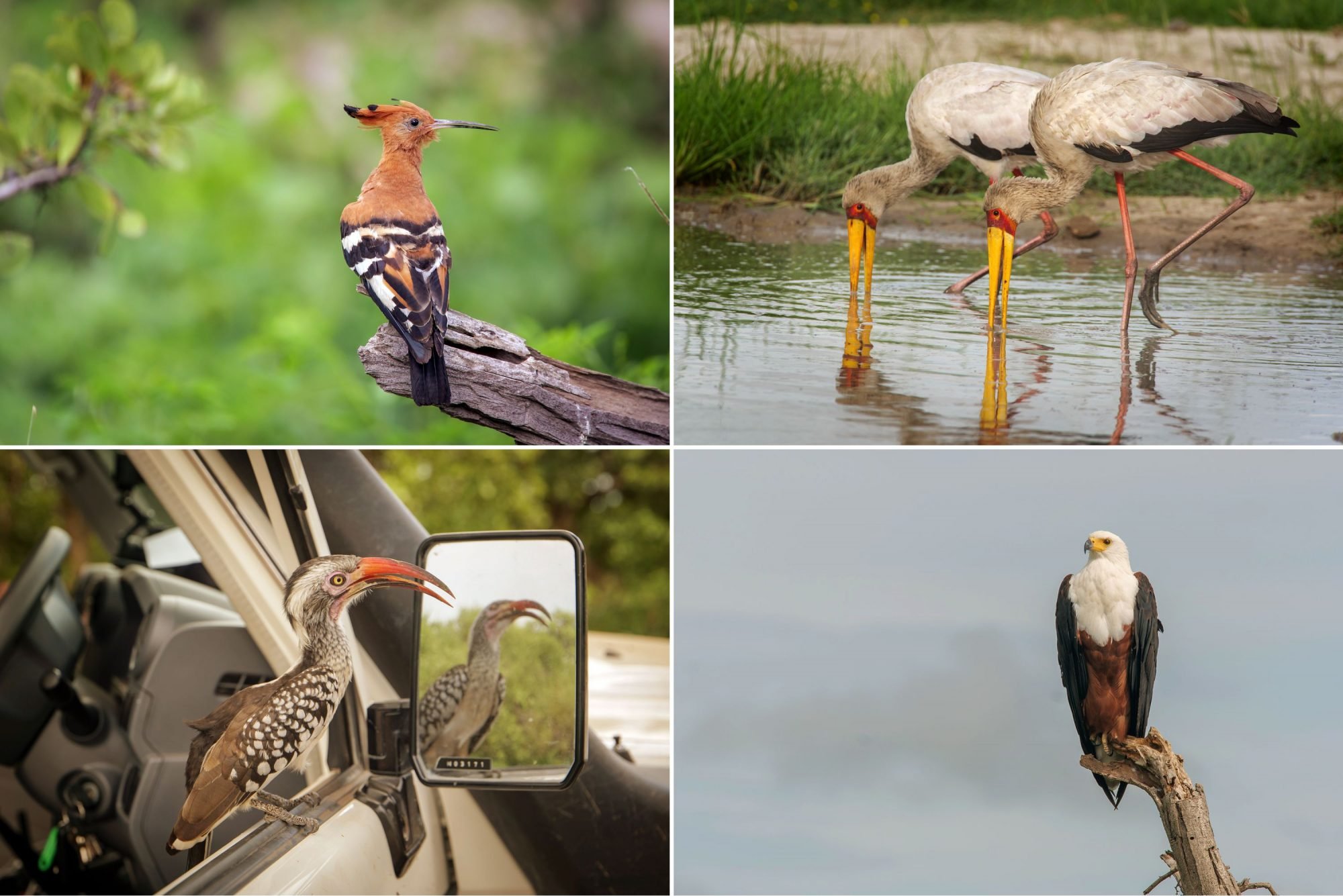
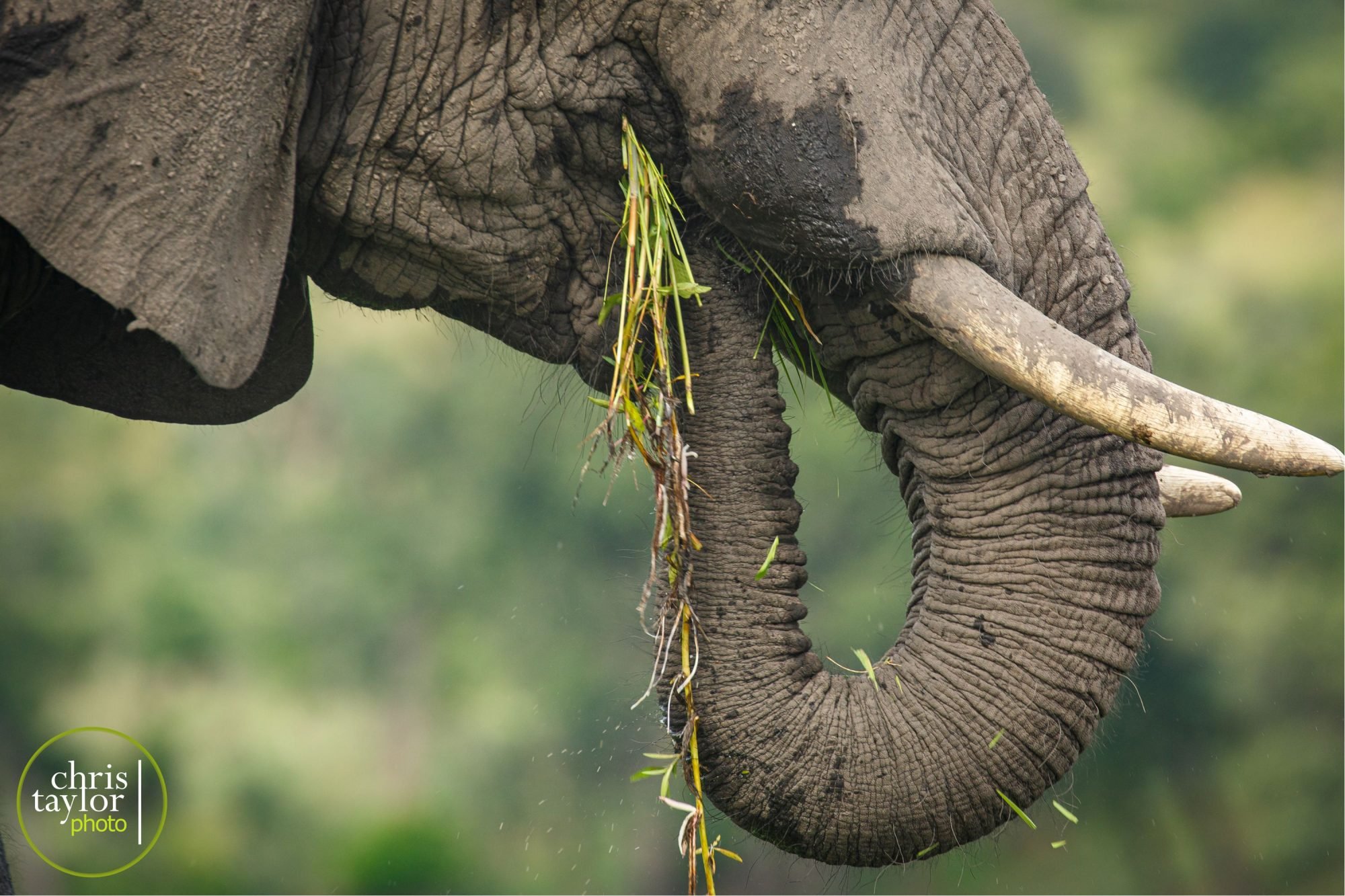
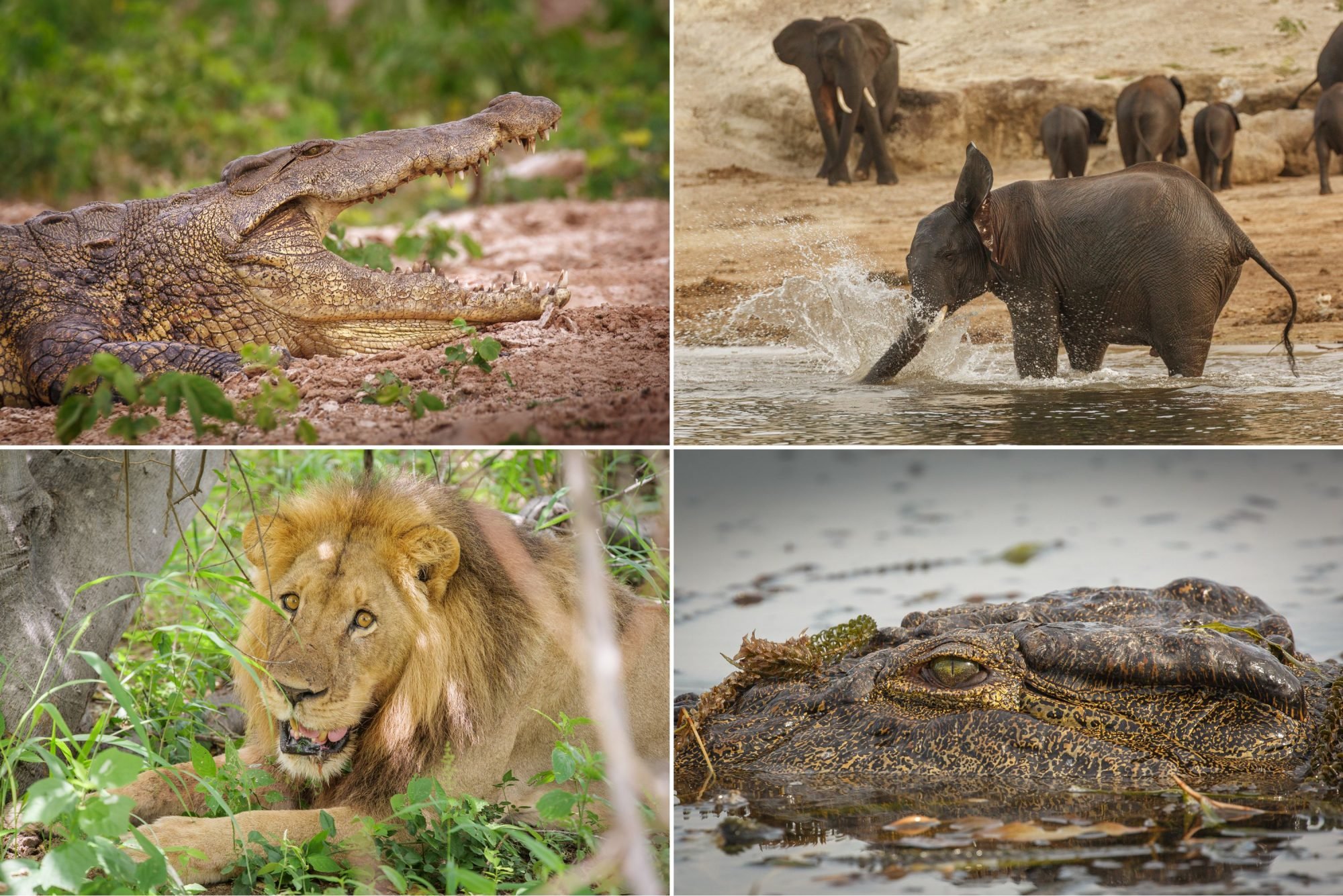
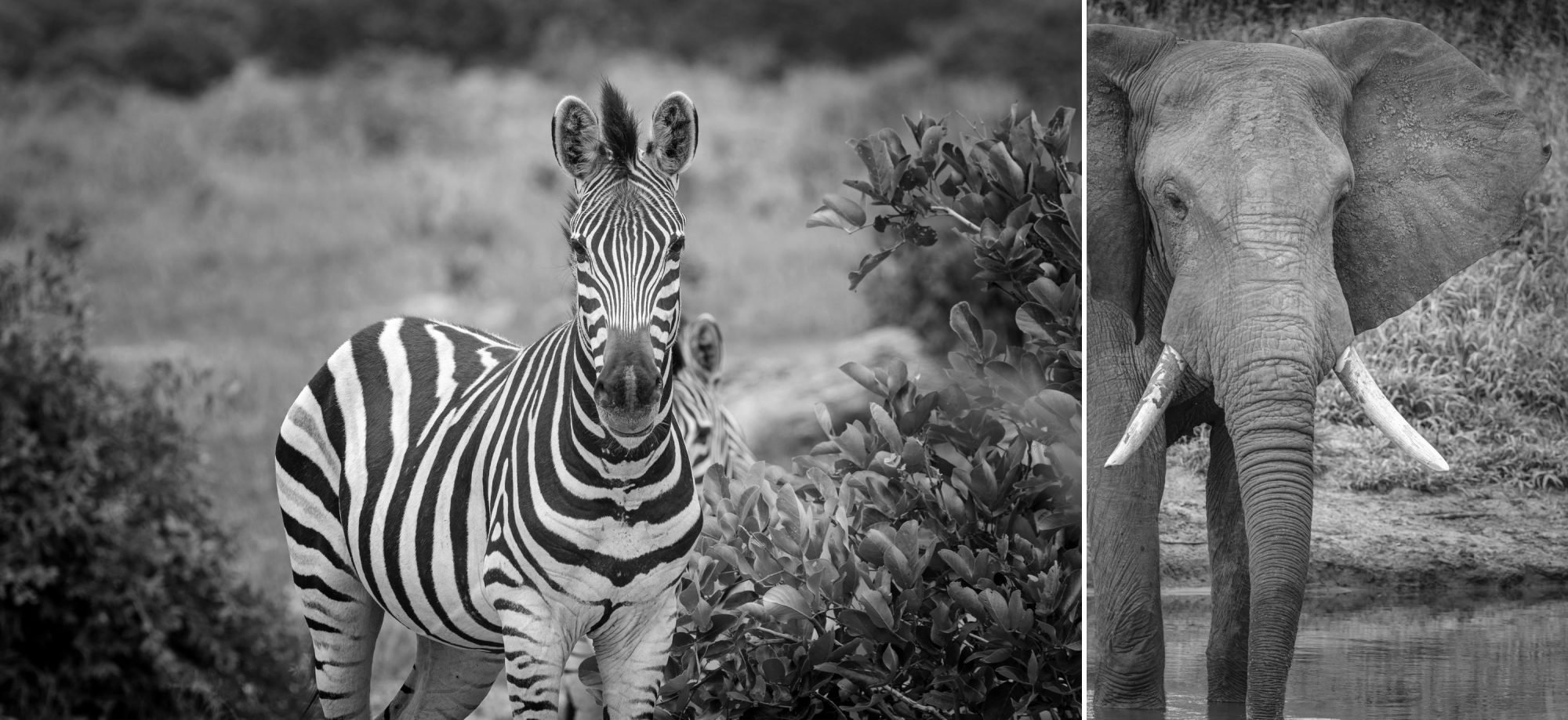 On our penultimate evening we took a riverboat safari on the Chobe river from Kasane, it was a wonderful last safari experience in Botswana with huge numbers of elephant, hippo, crocodile, buffalo and many birds. The sunset was incredible and I was thrilled to get some shots of hippo fighting in the river with the sunset behind.As I had been mainly concentrating on getting video footage rather than still photographs for much of the trip I didn't get as many stills as I would have liked but it's impossible to do justice to both at the same time. These photos hopefully capture the stunning array of wildlife but to really get a flavour of the trip I recommend getting a cup of tea & watching the video.
On our penultimate evening we took a riverboat safari on the Chobe river from Kasane, it was a wonderful last safari experience in Botswana with huge numbers of elephant, hippo, crocodile, buffalo and many birds. The sunset was incredible and I was thrilled to get some shots of hippo fighting in the river with the sunset behind.As I had been mainly concentrating on getting video footage rather than still photographs for much of the trip I didn't get as many stills as I would have liked but it's impossible to do justice to both at the same time. These photos hopefully capture the stunning array of wildlife but to really get a flavour of the trip I recommend getting a cup of tea & watching the video.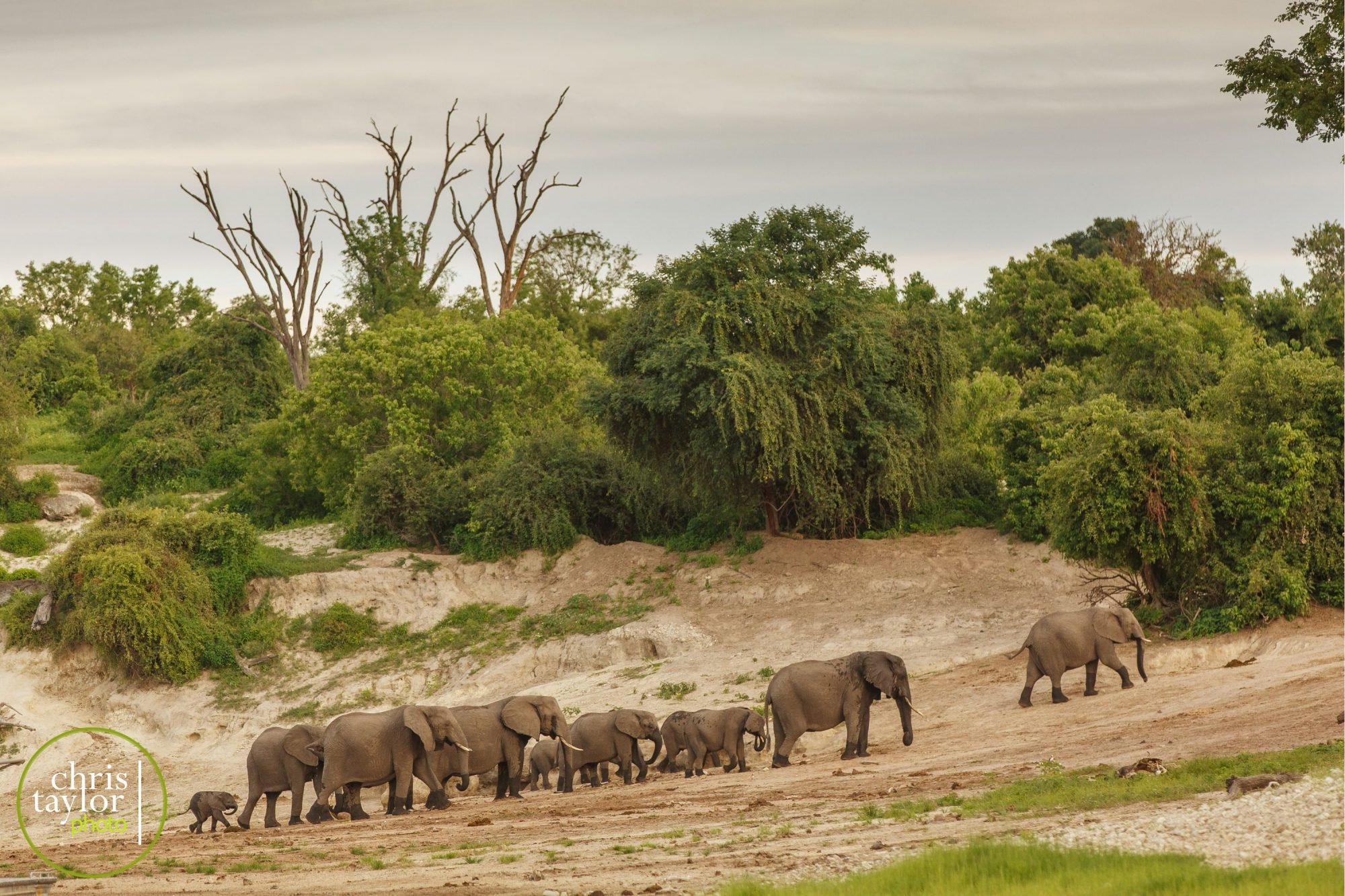
 On our last day we took a day trip over the border into Zimbabwe to see Victoria Falls, 'the smoke that thunders', one of the seven natural wonders of the world. Prior to coming out here we had seen press reports stating that the falls were drying up. As we stepped out of the vehicle on arrival at the falls we instantly knew that wasn't the case with the roar of water indicating a good flow. It was a truly impressive sight, I was glad I took a raincover for my camera as we all got thoroughly drenched by the spray.
On our last day we took a day trip over the border into Zimbabwe to see Victoria Falls, 'the smoke that thunders', one of the seven natural wonders of the world. Prior to coming out here we had seen press reports stating that the falls were drying up. As we stepped out of the vehicle on arrival at the falls we instantly knew that wasn't the case with the roar of water indicating a good flow. It was a truly impressive sight, I was glad I took a raincover for my camera as we all got thoroughly drenched by the spray.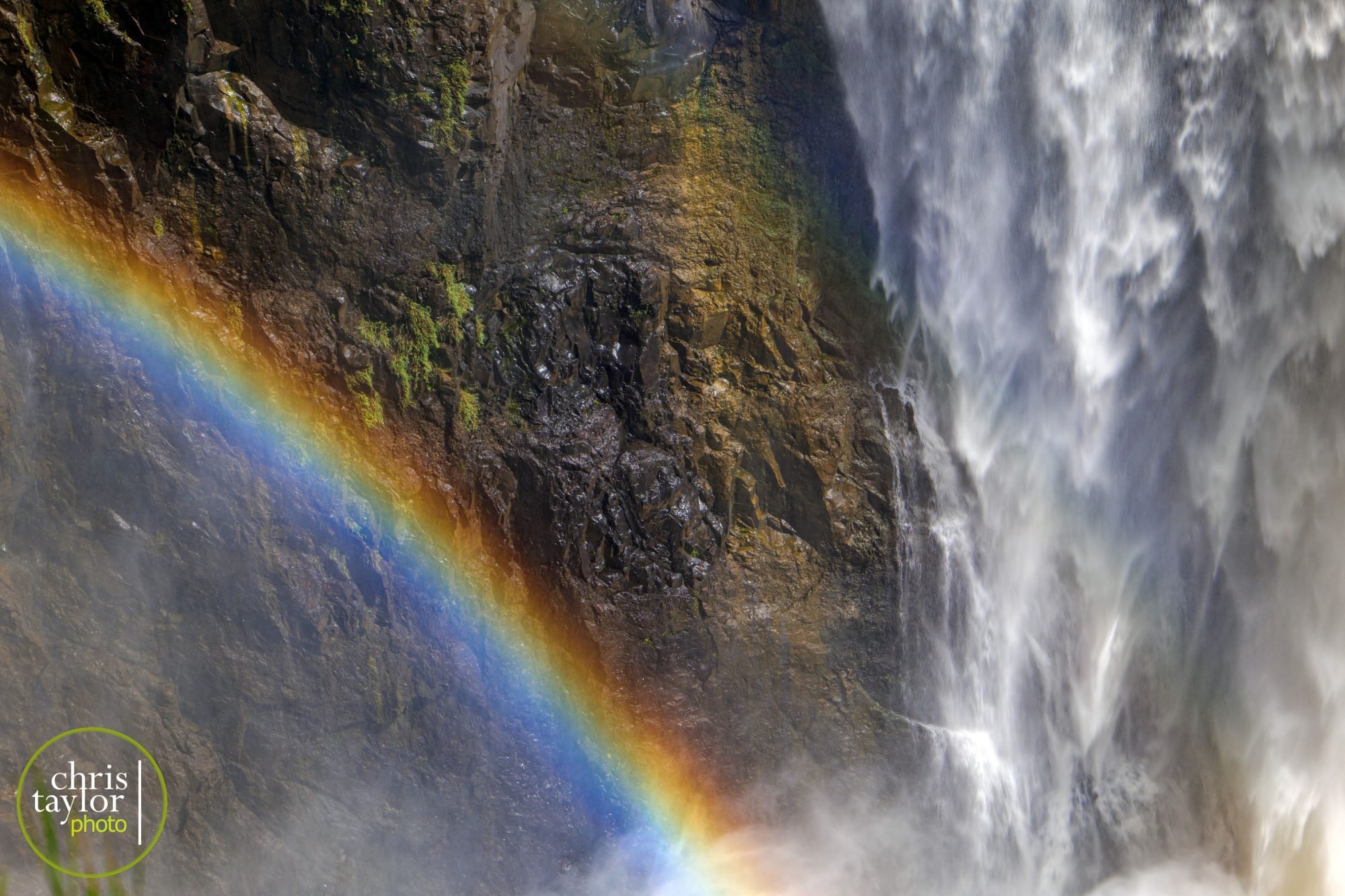
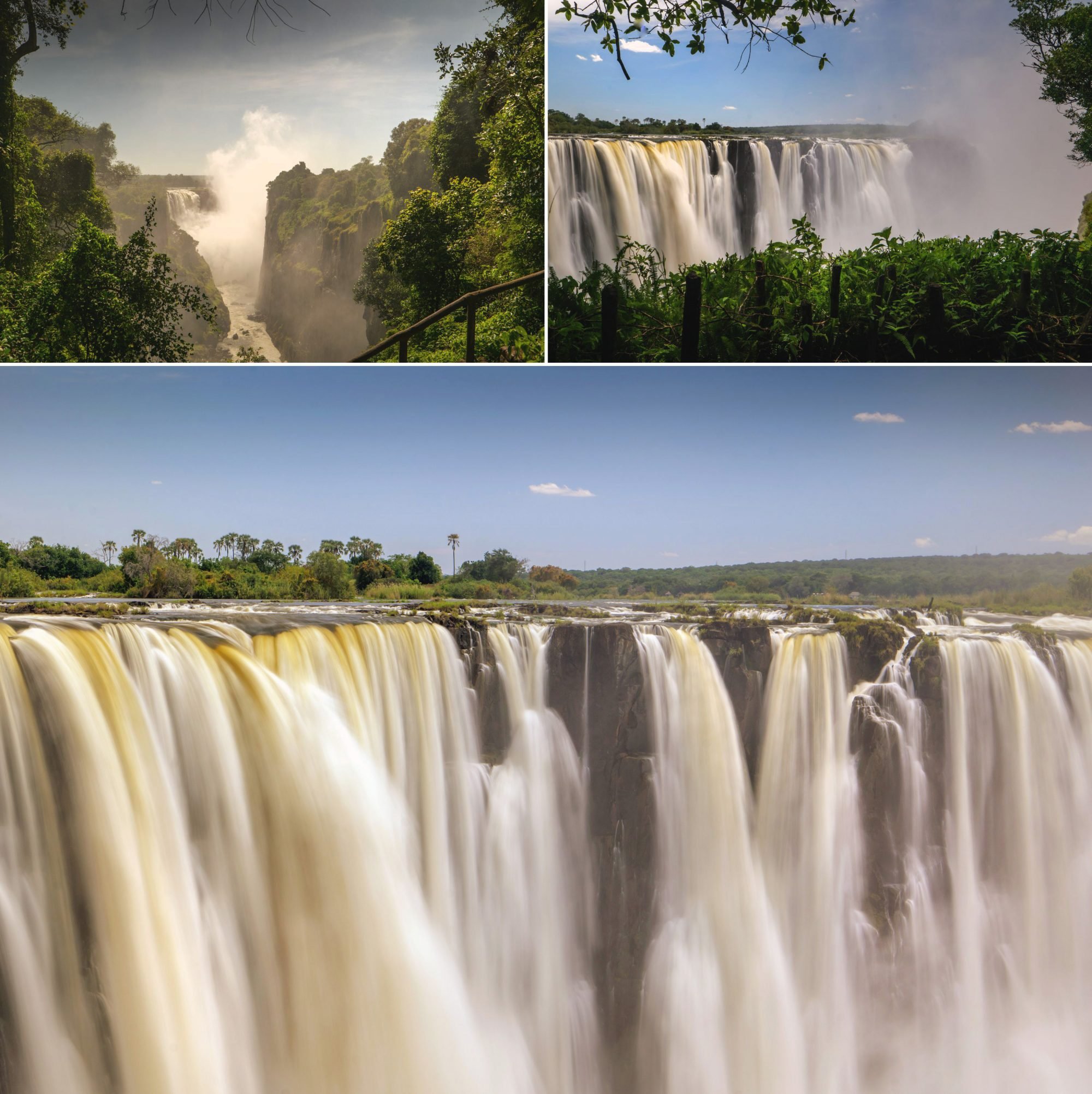 Botswana was an amazing experience, and my third safari trip in twelve months, I feel very lucky to have been able to visit such beautiful places and photographing/filming such wonderful wildlife. I really recommend anyone have at least one safari holiday in their life, I wasn't sure it would appeal to me but how wring I was, I am now well and truly hooked! As people told me before my first African trip: "It gets under your skin", it certainly does, I'll be back!In fact I'll be back in Africa again this year since myself & Leanne are leading a safari photography trip to the Maasai Mara, Kenya in June. The trip is being organised through London safari travel experts Far & Wild Travel, more info on the trip is available on their site here. It promises to be an amazing trip, while aimed at helping people improve their photography (and let's face it, who wouldn't want to get the best possible shots on a trip of a lifetime?!), it will be a great chance to experience the thrill of a safari in this world-famous ecosystem. Spaces are limited so book now to learn all of my tips & tricks for getting the very best out of your digital camera.
Botswana was an amazing experience, and my third safari trip in twelve months, I feel very lucky to have been able to visit such beautiful places and photographing/filming such wonderful wildlife. I really recommend anyone have at least one safari holiday in their life, I wasn't sure it would appeal to me but how wring I was, I am now well and truly hooked! As people told me before my first African trip: "It gets under your skin", it certainly does, I'll be back!In fact I'll be back in Africa again this year since myself & Leanne are leading a safari photography trip to the Maasai Mara, Kenya in June. The trip is being organised through London safari travel experts Far & Wild Travel, more info on the trip is available on their site here. It promises to be an amazing trip, while aimed at helping people improve their photography (and let's face it, who wouldn't want to get the best possible shots on a trip of a lifetime?!), it will be a great chance to experience the thrill of a safari in this world-famous ecosystem. Spaces are limited so book now to learn all of my tips & tricks for getting the very best out of your digital camera.
